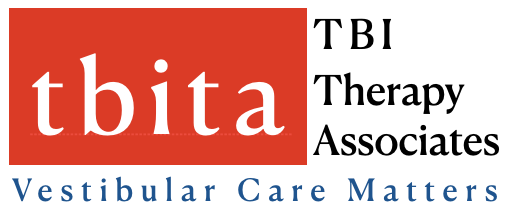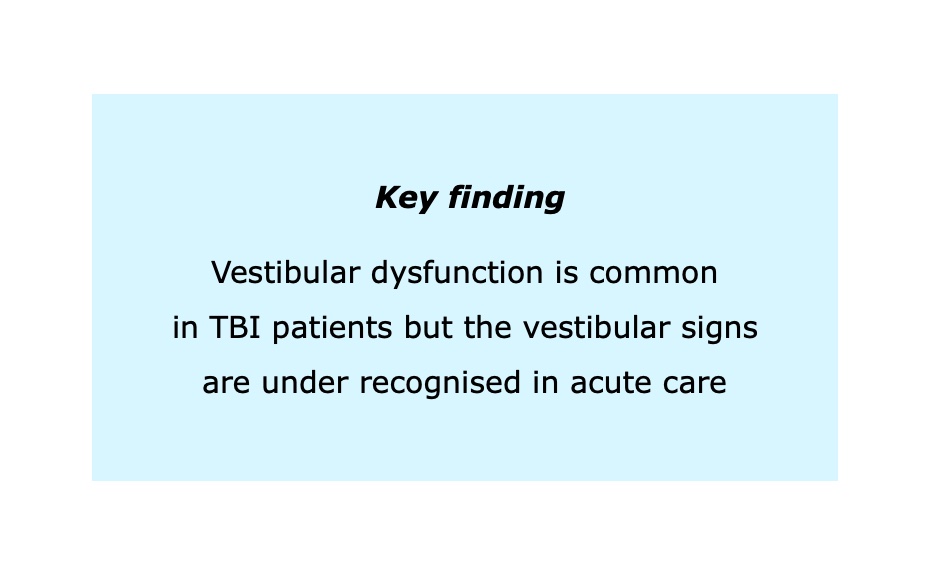Title: Vestibular dysfunction in acute traumatic brain injury
Authors: Marcus HJ, Paine H, Sargeant M, Wolstenholme S, Collins K, Marroney N, Arshad Q, Tsang K, Jones B, Smith R, Wilson MH, Rust HM, Seemungal BM. Vestibular dysfunction in acute traumatic brain injury.
Source: J Neurol. 2019 Oct;266(10):2430-2433.
Vestibular dysfunction is an incredibly common and long-lasting impact of Traumatic Brain Injury, with a large proportion of TBI victims facing vestibular problems several years post-injury. Vestibular dysfunction alone contributes heavily towards unemployment post-TBI, increasing it threefold. Hence, proper diagnosis and treatment of vestibular conditions resulting from TBI are important for the long term wellbeing of the patient, as well for a reduction of the socioeconomic impact of TBI.
Unfortunately, it is difficult to study the causes of post-TBI vestibular conditions, potentially because of adaptive brain mechanisms which occur in chronic TBI. These adaptive brain mechanisms may obscure the link between the vestibular symptoms and their signs. Thus, the study proposes that investigation of acute cases, where brain adaptation has not occurred, would be useful to conduct.
In the study, 111 Major Trauma Ward patients were screened for vestibular symptoms, and subsequently underwent neuro-otological assessment. Of the 111 patients, 96 were found to have vestibular dysfunction. 47 of this 96 were then assessed for the study. Multiple signs of vestibular dysfunction were found, the most common being gait ataxia, which 62% of the 47 presented with. Importantly, half of the 62% did not even perceive their problem, suggesting that vestibular symptoms may be a larger issue in TBI patients than currently recognised. Additionally, the study notes that injury of both central and peripheral systems can occur simultaneously, an occurrence that is relatively unique to acute TBI, which can theoretically delay recovery.
Overall, the study finds that vestibular dysfunction is highly common among TBI patients, but that the signs are under recognised. Additionally, it recognises that there is not enough evidence that routine assessment for vestibular problems at the acute stage is worthwhile to patient outcomes. Due to the lack of existing research and the negative impacts of post-TBI vestibular dysfunction, the study calls for more mechanistic, prospective studies into acute TBI.
Key findings
- Vestibular dysfunction is common in TBI patients but the vestibular signs are under recognised in acute care.

